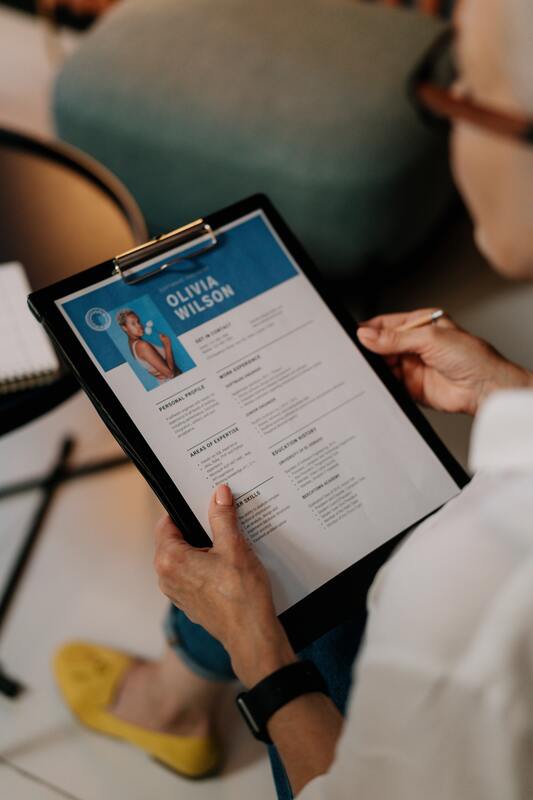|
by Brenda L. Peterson, The Layoff Lady Welcome To The SuckThe process of being "in transition" is like no other. Not only do you have no outwardly dictated plans on any given weekday, but you don't know how long your unstructured time off will last (another week, another month, a few months?) or what your day-to-day life will look like once the transition is over. There's also the issue of figuring out what to do with yourself when you're not job searching--in addition to feeling guilty because you're not doing more job searching. As an extra added bonus, there are the occasional freakouts about money, nervousness about career prospects, and the once-in-a-great-while "I will never be employed ever again!" full-on panic. Suffice it to say that job searching can be full of obstacles that make the process hard to manage. Knowing the possible issues is the first step towards figuring out how to mitigate each challenge and move forward. Here are five unfortunate reasons I have discovered about dealing with an unexpected career transition and a few coping strategies for dealing with each. Reason 1: You Won't Always Interview For "The Perfect Job."Congratulations! You just found THE PERFECT JOB! You have all of the required and preferred qualifications! It's at the right level with your dream company, and you even know someone who works there who will say great things about you! Surely your days of job searching are coming to a close because you are the purple squirrel for THE PERFECT JOB! Enter reality. I'm sorry to say that you may not even manage to get so much as an initial phone screen for this position. Even when you feel like the job was tailor-made for you, someone in a decision-making position may not agree. Why might that happen? For one, the position may not actually be available. Some organizations post job openings to gauge interest in the position even though they have no plans to hire anytime soon. Conversely, the role may have been open for a while, and the selection process may be well underway. There could also be an internal person who will take the job without additional people being considered. In some cases, companies may have a policy that they need to post positions externally for a given length of time, even though they already have a candidate in mind. Still other organizations may decide part way through the hiring process to leave a position unfilled but not remove it from their posted jobs. Assuming the job is really, and for true accepting applicants, there may still be issues. For one, key organizational stakeholders may lack common agreement on what a job role will do and what constitutes being a well-qualified candidate. Decision makers may also each have their own non-negotiable requirements for the qualifications for the potential hire--which may or may not relate to the person's ability to do the job. Remember that no matter what the issue is, it seldom has anything to do with you personally. It's just the life of recruiting for and trying to fill positions with the best candidates they can find--sometimes with people who are (unfortunately) not you. Coping Strategies
Reason 2: People Who Aren't Good At Their Jobs Will Make It Hard.Remember a time at your last job when you had to deal with someone who was not good at what they did for a living? Like the rude salesperson who never did their paperwork right and missed deadlines? Or the recruiter who didn't keep good notes and forgot who they had phone screened? Or the company leader who wanted to approve every decision but would become unavailable for a week or more? During your job search, you'll realize those people exist in other organizations, too, and they sometimes stand between you and the job you want. It could come in the form of an administrative assistant who is supposed to coordinate your travel for an in-person interview--who didn't make reservations and then went on vacation, leaving you scrambling to find someone else to help. It may be the recruiter who doesn't realize that a learning management system and a learning content management system are roughly the same thing and wrongly screens you out early in the process. It may be the hiring manager who is overly concerned with your lack of industry knowledge and doesn't believe that anyone could just LEARN what they now know. It may be an insecure possible future coworker who wants to avoid hiring someone who might outshine them. Like the rest of life, things are not always "fair." You may not get the job, even if you are a strong candidate. And so it goes Coping Strategies
Reason 3: Along The Way, Someone Will Dislike You.I don't know about you, but I am friggin' delightful. I'm also able to connect and get along well with most people. However, during the interview process, no matter who I am or am not, it will not match what someone else thinks the candidate for the position should be. Whether they thought I should have smiled more, made a different outfit choice, or given more detailed examples, someone's negative reaction to who I am may take me out of the running for a job. People often have their own pet theories about what they'd like in a coworker, manager, or direct report. They may be convinced that having the title "account manager" is pivotal for success, that all candidates must have a master's degree, or that people who ride horses are pretentious. You might also have the misfortune of reminding them of the mean girl in high school and BOOM--instant dislike. Again, life isn't necessarily "fair." Coping Strategies
Reason 4. The Process May Be All Over The Place.The job interview process can be anything from one interview to many, many, many interviews, depending on the organization and the role. Typically, I expect to have a phone screen with an entry-level HR person to confirm that I can speak in sentences, an in-person interview with the manager and potential coworkers, and a final interview to demonstrate skills and/or meet with a company VP. In addition, a given employer may want you to do more to show that you have the skills necessary to do the job. For example, you might be asked to pass written assessments, submit work samples, present to a group or complete a project. They may even have you come into the office for the day and "work" as if you are already in the position you are applying for. Interviews could take place over the phone, via web conference, through email, in person, or (more likely) a combination of all of the above. Some companies will have a pre-defined, structured process for the pacing and format of interviews. Other organizations will appear to be making it up as they go along. You may also inadvertently skip steps and realize near the end of the process that you should have talked about a basic topic like salary range or work location. Sometimes, it may seem that the interview process is never-ending because you have yet to talk with every single person in the organization. Coping Strategies
Reason 5: Their "Fast" And Yours May Be Different.I remember being a child and how LONG the year seemed. It always took forever to get from my birthday at the end of August to Christmas. Enter adulthood. I find myself consistently marveling that it's already whatever day/month/season it is because it seems it was just that other day/month/season. In this scenario, your employer is the adult, and you are the child. Some companies will be motivated to fill positions and move quickly. In contrast, others might have days, weeks, or even months between your contact with them--all because something that wasn't filling that position became a priority. What about that two days the employer estimated it would take them to contact you? It may turn into a week or two. Since they're busy addressing customer issues, traveling to client sites, and doing their expense reports, they didn't even realize it took that long. Or, as any job seeker doesn't want to hear, you may not be getting the job. Responding to a candidate quickly usually shows that the potential employer is interested. In many cases, taking longer to respond may indicate lagging interest. Such is how the whole process works. Coping Strategies
Learn More
3 Comments
By Brenda L. Peterson, The Layoff Lady The Value of Professional NetworkingWhen it comes to job searching, professional networking is a critical component of success. Ideally, you make initial connections with people through LinkedIn (maybe even after meeting them in person or at an online group event). While this is a great start, there is value in building relationships beyond that initial connection. A 1:1 meeting can significantly strengthen a networking relationship and help you learn how you and your new connection can help one another succeed. About 1:1 Networking MeetingsSo what exactly is a networking meeting? Back in the day, I remember hearing people talk about doing "informational interviews." In short, if you were interested in having a particular job or working with a specific company, you would contact an organization or individual and ask if they would meet you for an informational interview. In this 1:1 meeting, which could take place via phone or in person, you might learn about the company, what they are looking for, skills to acquire, and more. It also allowed you to start to build a relationship with a company--or a possible advocate in the person doling out said information. Fast forward to now. Today, a networking meeting is typically between you and another person deciding to spend a half hour-ish together. This meeting, sometimes called a coffee chat, could happen virtually via Zoom or in person, often over coffee. If you're job searching, the typical focus will be on how to progress in your job search. Someone may agree to a networking meeting because you have things in common (like a field of work, background, professional goals), because they are generally committed to helping people when they are job searching, or because you have a mutual acquaintance to ask that person to meet with you to help you out. Networking Meeting = Informal InterviewWhenever you have an opportunity to meet one-on-one with someone, remember that you are taking part in a type of informal interview. Whenever I meet with someone in career transition, my goal is to help them figure out their next steps, offer advice (if they ask and are interested), and give them ideas on further steps they might take, including who they should speak with next While I go in with this idea, the amount of help I'll provide also depends on how this networking meeting goes. Ideally, we have a good, productive conversation, and I think to myself, "I totally want to help this person more." If the meeting goes well, I'll refer them to specific resources that might benefit them (like a networking group they might want to join, a company to check out, someone to follow on LinkedIn) and even put in a good word for them to have a networking meeting with someone else who might get them closer to their goals. In addition, if it goes REALLY well, this is a person who I'll refer to others for openings, pass on job opportunities, and maybe even hire someday. If the meeting doesn't go well, I'll share a few resources, but I may not be willing to help them as actively moving forward. Remember, any interaction you have with people will impact their desire to help you in the future. Types of Networking MeetingsHere are a few common types of networking meetings:
Networking Meeting Best PracticesHere are a few best practices for networking meetings:
The True Power of Networking MeetingsWhen people talk about how they "networked" into a new job, typically, that means they leveraged their initial connections to help make inroads with new contacts, who helped them get closer to a new position. The holy grail of networking meetings is when the person you meet with agrees to introduce you to someone else they know who could help you. That process repeats until you're talking to a hiring manager or influencer who can help you get an interview for a job. Having good networking meetings is a critical step in that process. Learn MoreBy Brenda L. Peterson, The Layoff Lady The Adventure of Career TransitionSince forever, I have worked in the field of learning and development. I have been laid off a great many times due to economic downturns, companies being bought or sold, new company leadership, or good old fashion reorganizations. While each period of unplanned job transition is rough in its own way, here are three core truths that help me weather the storm each time I search for a new work home. Truth 1: Working Time Goes Slower Than Non-Working Time.When you're a hiring manager, you have a ton going on, and only one of those things is hiring a new person. You're still trying to manage your team, meet deadlines, troubleshoot customer problems, and juggle all the people you're considering for your open position. In an interview, when one candidate asks about the hiring process, you tell them you should know who will move on to the next steps in the process "by the end of this week"--and at the time, you believe that is a reasonable deadline. Then there is a software release with a bug that causes three meetings to be scheduled with big clients, or someone quits suddenly, leaving a lot of arrangements to be made, or your child has to be picked up from daycare with the flu. Friday comes and goes, and getting in touch with a candidate falls off your radar until next week. Meanwhile, as a job seeker, you put a note on your calendar that you'll know one way or another by Friday. Then you analyze every syllable you uttered in the interview, hoping you didn't say anything awful. You rethink a facial expression you interpreted as approving and wonder if it really was that at all. You suffer through Saturday, Sunday, and Monday, secretly worrying that you will never work again. Ever. Instead of spiraling, take action to get you closer to your job of being happily, gainfully employed. After the interview, email the hiring manager a thank you message and send them a personalized connection request on LinkedIn. Put a note on your calendar for a few days after the hiring manager said they would contact you. Reach out to them at that time, including a few pleasantries, reiterating your interest in the role, and asking for an update. Will you get the job? Who knows. You did your part, identified what you can work on, and will continue to learn and grow as you go through the process for more roles. In addition, network with three more people and apply for three more jobs. Truth 2: It's Not "Your Job" Until You Receive A Paycheck.Inevitably as a job searcher, you run across it. THE job. It's the one you know is meant to be yours. It's perfect--easy commute, a great title, the go-to company, exactly what you are qualified (and want) to do. In your head you know it--this is MY job. You picture your new business cards, where you'll park, and how you'll introduce yourself as the "Director of Awesomeness" for this perfect company. You think--why should I even bother applying for anything else because this is SO my job! Except, well, it's not actually your job yet. You're looking at it and seeing yourself in it, but it's not real. You don't work there. No one is sending you a paycheck for it. They don't even know your name yet. This MAY be the job you eventually get, but nothing is done yet. You know what else? It may not end up being your job. You need to remind yourself that it's not a done deal. Apply for that job--even work hard to get it. Know, though, that you may end up not even getting called in for an interview. This doesn't mean you're not still awesome. There's just a lot going on. There may be an internal candidate, or a previous coworker of the hiring manager, or someone who has a referral from a college friend, or someone who has even slightly more of a qualification that didn't make that job posting. Instead of spiraling, take action to get you closer to your job of being happily, gainfully employed. Whenever you fall in love with a job or think of something as "your job,” make an extra effort to apply for additional jobs. If the job you see yourself in works out, great. If not, you're still working towards your ultimate goal of finding a new role (complete with a paycheck), whichever one that might be. In addition, network with three more people and apply for three more jobs. Truth 3: You Only Need One Job.Applying for jobs is a process. Looking back at my records, I have typically applied for between 40 and 100 jobs when I've been in career transition. It's easy to get discouraged. Sometimes you apply and hear back a fat lot of nothing. Sometimes my stomach sinks when I see a job that I've applied for (and was quickly rejected), and it's reposted, and realizing that they will hire "not me" for that role. It's hard when the job where you interviewed a ton of times tells you they really liked you, but went with an internal candidate. It's rough to hear that you were great, but that you came in second. There is so much rejection in the job search process that you’ll inevitably feel down, like a loser, and like there is no hope. At the end of the day, though, you only need one job. You need one organization to tell you "yes.” You need one place where you and the employer agree to work together. When I remind myself that I only need an ultimate success rate of 1 in 100 to be happily, gainfully employed, it makes it all seem much more manageable. All those no answers get you to the one yes you need. The trick is that you don't know which one will be that yes. Instead of spiraling, take action to get you closer to your job of being happily, gainfully employed. In addition, network with three more people and apply for three more jobs. Learn MoreBy Brenda L. Peterson, The Layoff Lady Surprise! It's Layoff #5!In 2019, for the fifth time in my career, I found myself unexpectedly in a position where I needed to change jobs. The last time around, my position was suddenly eliminated on the day I returned from vacation. That was about two years before, and I was not expecting to have to do this again quite so soon. My Job Search NumbersThings moved a bit more quickly this time than I initially expected. Keep in mind, too, that about half of the jobs I applied for have not responded. In their defense, I was on and off the market pretty quickly. With that, here’s how this job search shaped up:
Differences From Previous Job SearchesMy last job search (after layoff #4) lasted 147 days. That's right. It was exactly 100 days longer. So what were the differences between these two job searches? What magic did I use to so quickly land a great new position? Time of YearFortunately (as I look at the bright side), I knew I needed to make a change in late September. I’ve found that being unemployed over the holidays nearly guarantees about an extra month or two of job searching (or, more likely, waiting). My last two job searches included the holiday season, lasting 180 and 147 days, respectively. My best advice is to take some time off from job searching over the holidays. This time around, when I estimated the possible length of my period of unemployment, I surmised that I would either secure a new position before Thanksgiving or I’d most likely be waiting to start a new role until February or March of next year. Getting a jump start, even by a couple of weeks, made a big difference. Position AvailabilityDuring layoff #1 and layoff #2, I lived in Madison, Wisconsin. While I love Madison as a city, as someone whose chosen profession is corporate training, I knew that I needed to move to a larger job market or consider doing something else for a living. In the middle of layoff #2, I started targeting companies in Minneapolis and planning a move. Even with the challenge of relocating (and managing all of the other areas of my life that were in transition right then), finding a new job took under five months. Being in the greater Twin Cities area, even with me being more selective on where to apply, I still had a lot of options. This gave me a better chance of one of the positions I applied for moving me along to the interview stage. I also learned to manage my job search anxiety by applying for additional positions each time I was concerned about not hearing back from one potential employer. Professional NetworkI started using LinkedIn seriously in 2006. Since then, I’ve connected with coworkers, members of professional development organizations, colleagues with whom I’ve interacted, and pretty much anyone who I encountered and found interesting. I stay active on social media sharing useful content and attend industry meetings on a regular basis. Having this robust professional network and assisting individuals in my network when they are job searching or exploring new fields of interest, has helped me immensely. When encountering a position that interested me, I immediately looked to my network to see who might be able to put in a good word for me and help me get pulled out of the initial pile of candidates. I have also had more than one “informal interview” with a possible referrer so they feel comfortable recommending me for a position. Since people are putting their reputations on the line, I don’t take their assistance for granted. Strong QualificationsI’m at the point in my career where I know what jobs interest me. I have good formal education, recent job titles that are well aligned with roles for which I’m applying, and I’ve stayed current on the industry. While having someone refer me for a position helps, I know I still need to be a well-qualified candidate. Those qualifications are what helps me get from a courtesy phone interview to being considered a viable candidate for an open role. Pure Dumb LuckThere is a certain amount of planetary alignment that happens whenever something good manages to actually happen. In this case, a company in a field that interests me (software) had an opening for which I was qualified, and I had a former coworker who was willing to refer me for the position. The quotes “The harder I work, the luckier I get” comes to mind as does “luck is preparation meeting opportunity.” Sometimes, timing is everything. Learn MoreBy Brenda L. Peterson, The Layoff Lady A Note About The NumbersAs a bona fide Excel nerd, and meticulous planner, I kept detailed records on my job search journey from layoff #4 through finding a new role. Here are a few statistical highlights of what on earth I did with myself in the months between when my previous role ended and starting a new job. I’m including several numbers in this article. Keep in mind that while I pride myself in my ability to count and do basic math, I’m dealing with a very small sample size. (See the “Learn More” section for issues that can be caused by having a small sample size when it comes statistical information.) This article can only barely be called “research” and is more appropriately described as me sharing my personal experience. With that disclaimer, on to the numbers! How Long Will This Take: Job Search Length
Please Look At My Resume: Applications Submitted
Now We're Talking: Interviews
I Know People: Referrals and Impact on Interview Likelihood
I Will Never Work Again: Job Search Low Points
Everything Works Out: Lessons Learned
Learn Moreby Brenda L. Peterson, The Layoff Lady Network Building in the BeforetimesPre-pandemic, "networking" typically meant attending in-person events, shaking a few hands, and having a somewhat meaningful conversation with another human. While in-person opportunities are available again, it's still a good practice to continue to build your network when interacting with people online. Enter the WebinarLike many people, I have attended (and delivered) approximately a bijillion online meetings, trainings, and interactive instructor-led sessions. I've been approaching these sessions with a mind towards not just attending, but also making new connections. Although the process differs from in-person interaction with people, I have managed to connect with more people (and often form more meaningful connections) than attending in-person meetings and “working the room.” As someone who runs introverted and communicates effectively in writing, this was an opportunity to turn webinars into a bonus network building exercise. Your Personal Webinar BrandingWhen attending a webinar, I make sure that people are able to see who I am, my full name, and a picture if at all possible. I use the same photo I use on LinkedIn so that people associate me with that picture. I also make sure that my first and last name are present so people have a chance of being able to find me after the session--or will recognize my name. In addition, during the webinar, I interact during the session. This usually involves commenting in the chat when prompted--which is also an opportunity for other attendees to see my full name. During any small group interactions, I'm sure to turn my camera on so people can see my face, hear my voice, and see my name. If the presenter asks people to share out loud, I usually turn on my camera, and share my thoughts. Again, this is another opportunity for people to hear my voice, see my face, and see my name. Each of these "impressions" helps people start to get to know me at least a little bit. Finding Potential ConnectionsDuring the a webinar, I often take a screen shot of the participant list, and a gallery of attendees if people are on camera. Whenever possible, download the chat from the session. This helps me identify who was active in the webinar and gives me additional information on anything they might have shared during the session. I often make notes on notecards during sessions to help me remember who might have said what and key content covered. All of these details can help me when interacting with attendees later on when I send LinkedIn connection requests. Researching Potential ConnectionsAfter attending a webinar, here is my process for adding new LinkedIn connections:
Personalizing a Connection RequestPersonalizing connection requests is a great way to start building a relationship with a new professional contact. Here are the key components I include:
Connection Request ExamplesHere are a few examples of messages that you can use to invite people to connect. Currently, LinkedIn allows you to include up to 300 characters when personalizing connection requests. Hi, Jen. I see we both attended today’s White Box Club meeting. I’m also in career transition and seeking a new role in learning and development. Let's connect! I'm also always up for a 30-minute "virtual coffee" meeting to discuss how we can help one another as we job search. --Brenda Hi, Jack. Great to interact with you a bit at this morning's Excellence Share. I love sharing ideas with fellow L&D professionals. Let's connect! --Brenda Hi, Javier. I see we both attended today's "Sales Enablement Best Practices" webinar. I definitely enjoy learning from this group. Since you mentioned that you are job searching, be sure to check out The White Box Club on Meetup to help you as you find your next role. Let's connect! --Brenda After The Initial ConnectionHow do you further nurture that relationship? Here are a few ideas.
Continue to Build The RelationshipAfter connecting with people initially, be sure to continue to nurture those connections. Posting useful content, and occasionally messaging people is one way to do that. Ideally, you can add value to the relationship before you are in a position where you need to ask those individuals for help. Learn More |

Just get laid off?
Click here for info on what to do first. Author7-time layoff survivor Brenda L. Peterson, The Layoff Lady, waxes poetic on layoffs, job transitions, & career resilience. Buy The Book!Were you recently laid off from your job and need a roadmap for what's next? Pick up a copy of my book, Seven Lessons From Seven Layoffs: A Guide!
Categories
All
Archives
April 2024
|














